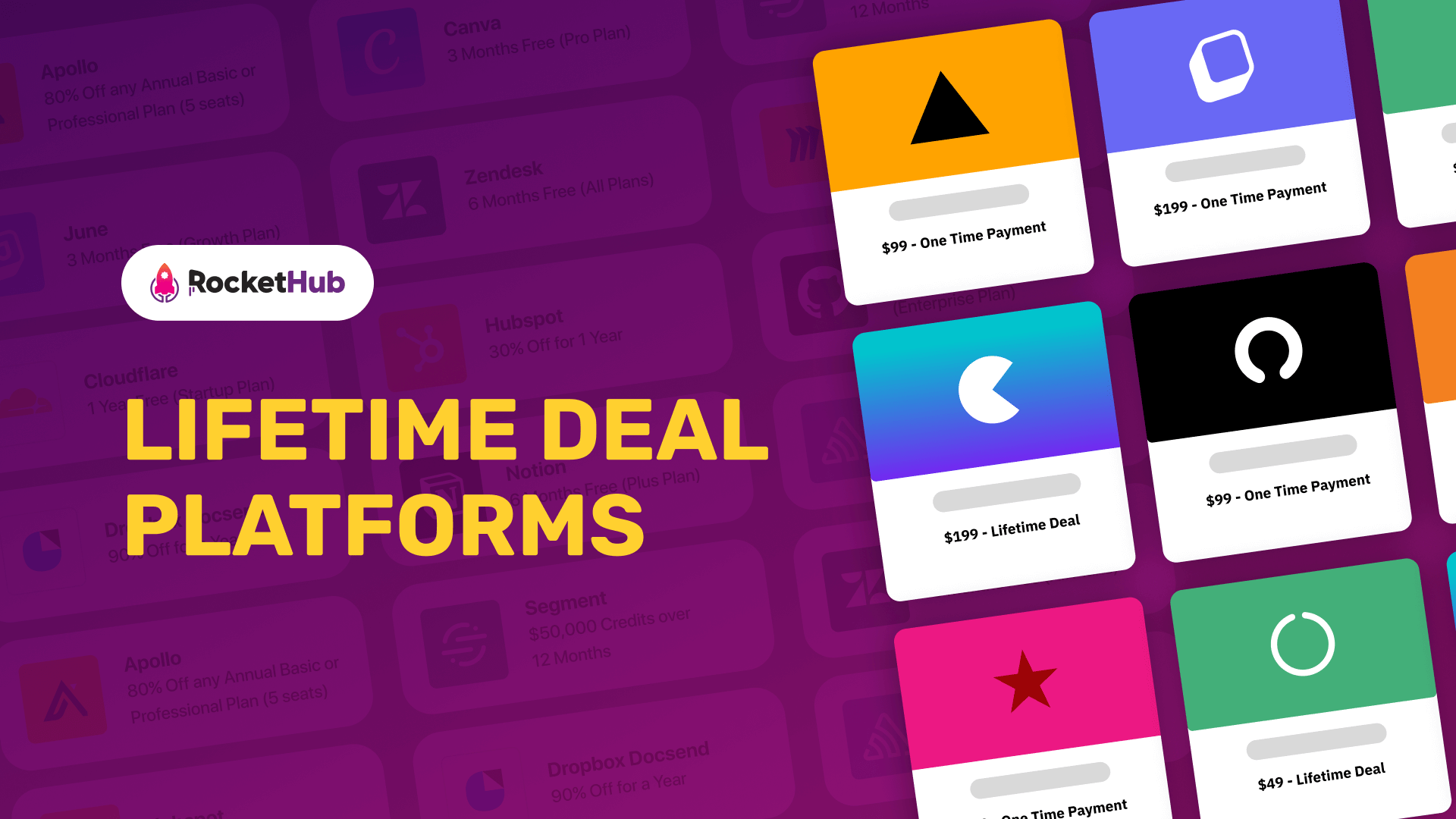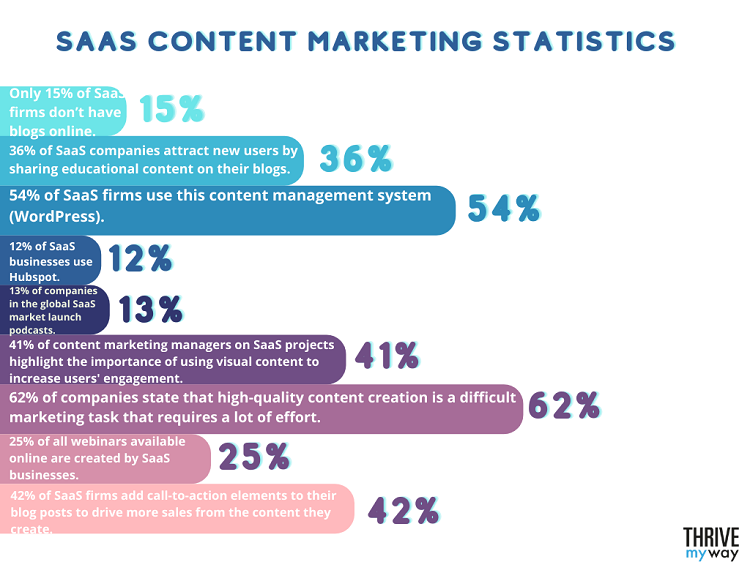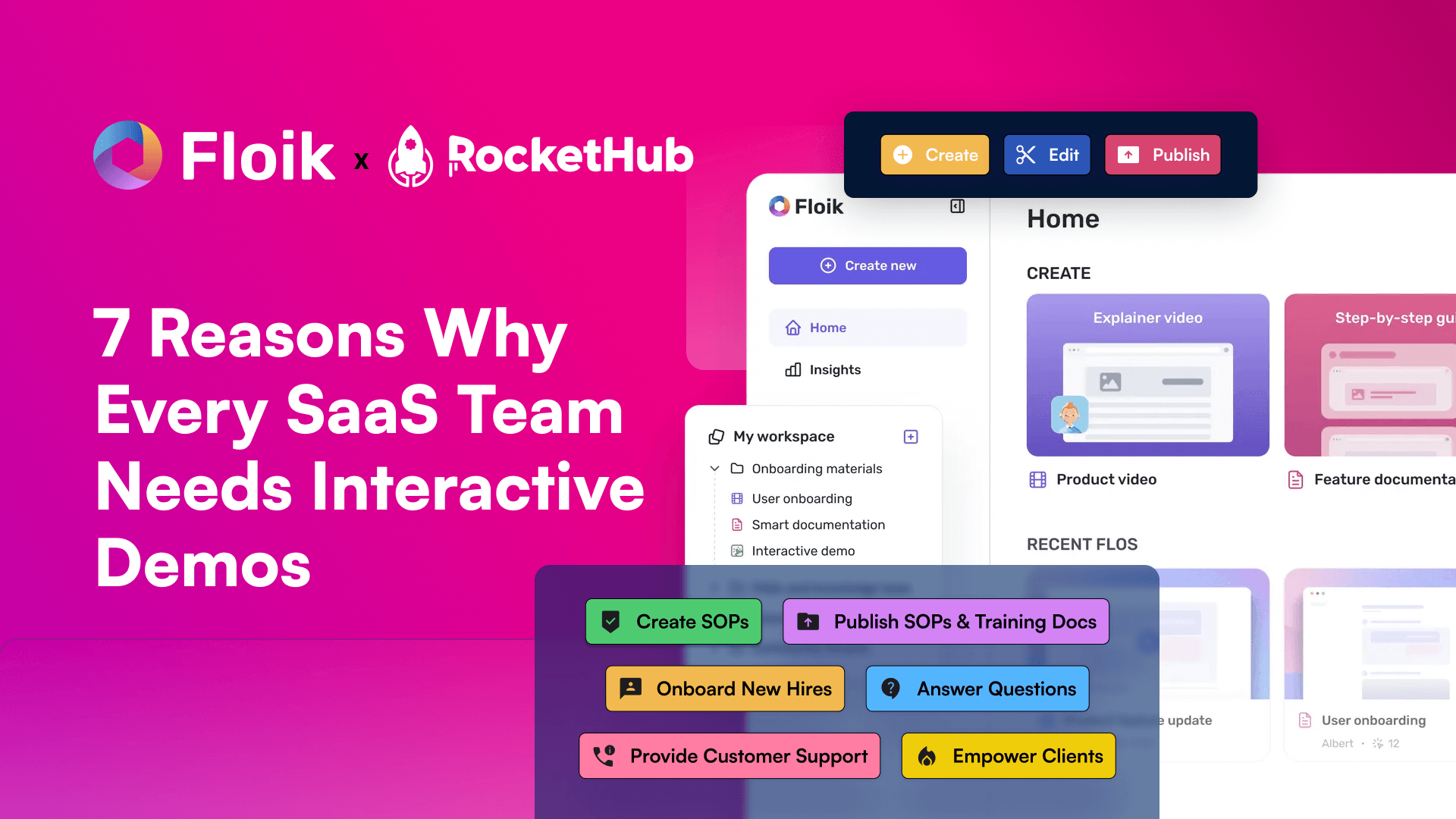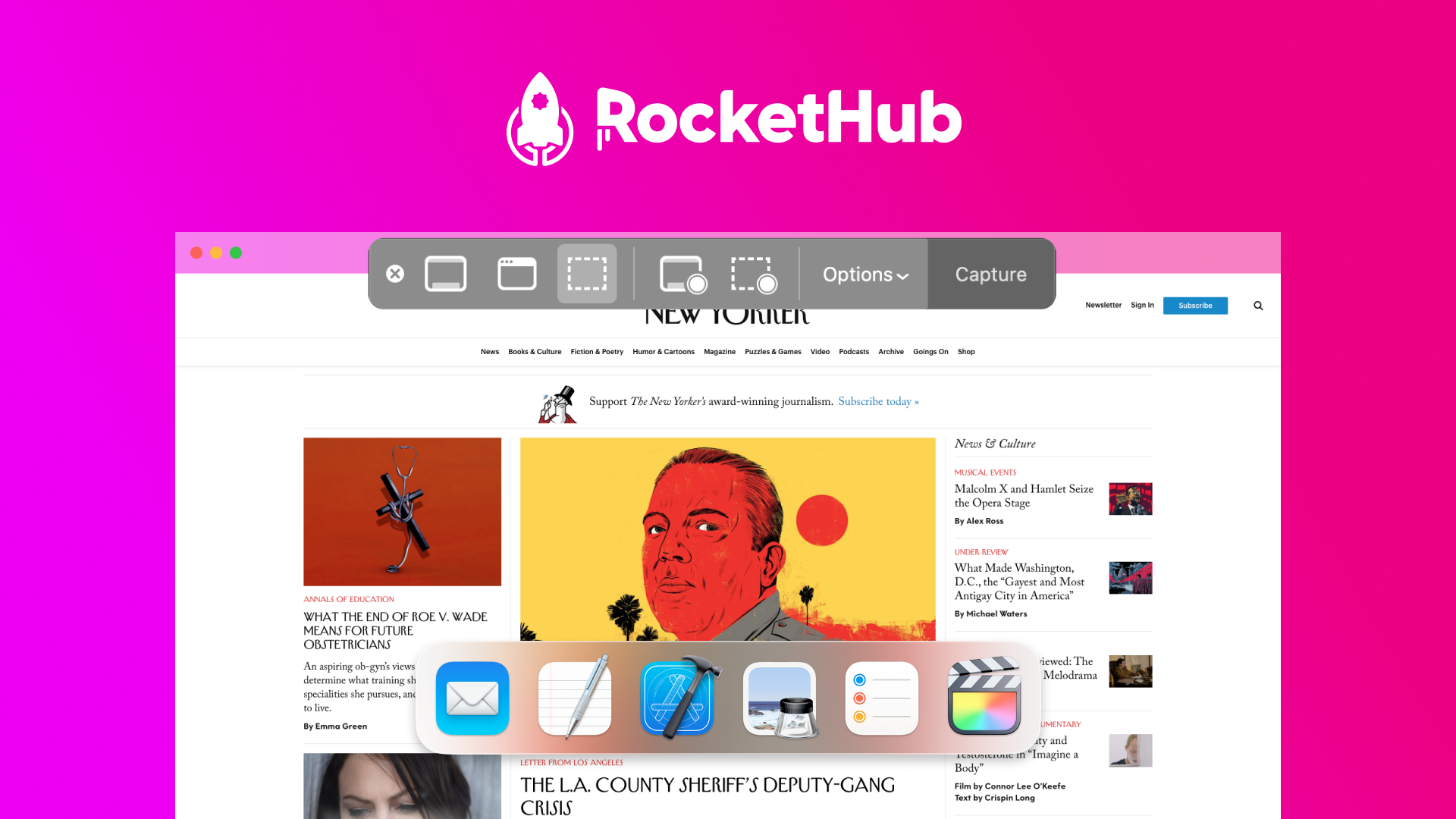
SaaS Marketing Statistics Every Founder Should Consider in 2022
- Angel Alfred
- October 28, 2022

What is it about SaaS marketing that makes it such a successful and appealing strategy? It is because it provides a high return on investment, the potential for organic growth to be exponential, and low entry barriers. There are dozens of verified SaaS marketing statistics data, all of which lead to it as the most effective inbound marketing strategy.
We live and breathe marketing at RocketHub, so we’re excited to report we’ve seen the benefits of this strategy time and time again. If that’s not too pompous for you, you might say we’ve seen the numbers come to life. So let’s move ahead and go over the SaaS marketing statistics we found after conducting thorough research in the market.
Why is SaaS Marketing So Important?
Software as a Service (SaaS) marketing is essential because builds awareness and helps sell software. SaaS marketing teams are crucial for product-led business growth, it helps to bring a product to a market, position a product, and build awareness around a SaaS market. Over the past few years, SaaS has been witnessing substantial growth at a rapid pace. Thanks to its evident advantage when it comes to innovation, security, usability, and cost, SaaS is now a target for many businesses trying to catch up with the rising sector.
We realize how performance metrics can be crucial to the success of any SaaS business, so keep reading and find out all the valuable data and statistics we’ve gathered so you can understand the SaaS market much better.
SaaS Marketing Statistics to Consider

We have collected and listed all the scattered SaaS marketing data and statistics in one place for your convenience. Here’s a collection of 5 key SaaS marketing statistics sorted by categories.
SaaS Growth Statistics

SaaS Growth numbers and benchmark rates can provide valuable insight for software businesses in relevance to how widespread the use of SaaS applications is, as well as the effect of such expansion on the modern workplace.
- The average number of SaaS apps being used by various establishments has doubled from 8 to 6 between the years 2015 and 2017. (BetterCloud)
- In the year 2018, the global workload of SaaS organizations reached $206 million. It’s expected to continue growing and reach $380 million by the year 2021. (Statista/Cisco)
- During the period between 2019 and 2021, the global SaaS market is expected to be worth $60.36 billion, amounting to a 9% CAGR within the 4 years. (Technavio)
- Since the year 2010, the average money spent per company on SaaS apps has increased every year. (Blissfully)
- In the year 2018, the average cost of SaaS subscriptions per employee was $2,884, which is higher than the cost of buying a new laptop (an Apple MacBook Pro at $1,299). (Blissfully)
- The forecast compound annual growth rate of the SaaS market is calculated to be 18%. (MarketsandMarkets)
- In the year 2007, there were only 500 apps for marketing. By the year 2017, the number of marketing apps grew to over 8,500. (PriceIntelligently)
- The lack of skilled workers, as well as cyber-attacks, could hinder the growth of the SaaS sector. (MarketsandMarkets)
SaaS Marketing and Sales Statistics

Marketing is a highly versatile domain where companies utilize different approaches to sell their products. It’s not a one-size-fits-all strategy, and so, the outcomes can vary greatly. SaaS marketing and sales statistics can help paint a clearer picture of how much it would cost to acquire a new customer as well as the types of techniques agencies tend to adopt.
- 48% of businesses reported an average contract length of 1 year, while 13% reported their typical contract being month to month. 11% of respondents reported having an average contract length of at least 3 years or more. (KBCM Technology Group)
- To acquire $1 of ARR (Annual Recurring Revenue) for a new customer, the median cost is $1.32. This cost can significantly drop down to $0.71 by adopting upselling strategies with already existing customers. (KBCM Technology Group)
- The median startup spends approximately 92% of its first average contract value on the sale, which translates into a payback period of 11 months on the CAC (customer acquisition cost). (Tomasz Tunguz)
- Having a global, widely popular brand on board as a customer is an effective way to add credibility and help general substantial revenue from second orders via referrals. (SaaStr)
SaaS Business and Customer Statistics

With its inevitable growth, there’s no doubt that SaaS has changed the global business scene. Cloud computing has enabled companies to take full advantage of automation at reduced expenses, some agencies attribute their emerging success to such platforms.
The following SaaS business and customer statistics can help you discern the impact of SaaS on the dynamics of workplace operation as well as the employee and customer experience.
- 38% of companies surveyed reported that they were already running almost completely on SaaS technologies. (BetterCloud)
- Organizations operating almost entirely on SaaS apps reported that they experienced higher employee engagement. 86% of end-users accredit SaaS for helping them succeed more than other desktop alternatives. (BetterCloud)
- In the year 2017, the number of SaaS apps used by companies on average increased by 33% from the previous year. By the year 2020, 73% of organizations signified that almost all of their apps (80%+) will be SaaS. (BetterCloud)
- Salesforce, one of the largest SaaS organizations in the world, was ranked the number 1 best company to work for in the United States. (Fortune)
- 70% of active free trial users are likely to buy paid services after reaching out. (Invespcro)
- On average, companies running entirely on SaaS use 34 apps, which is 2.1× more than the typical workplace. (BetterCloud)
SaaS Pricing Strategies Statistics

The following SaaS pricing strategy statistics are a reliable way of figuring out their impact on the sector’s profitability.
- 50% of SaaS organizations, up to this date, still rely on user-based pricing. (Cobloom)
- The most common free trial period is 1 month. (Cobloom)
- About 40% of SaaS companies take a value-based approach to set pricing. (OpenView Venture Partners)
- 30% of SaaS businesses charge based on usage. (OpenView Venture Partners)
- The golden number of paid packages is 3 (or low, medium, and high). Offering too few or too many products can risk confusing or losing customers. (2checkout)
SaaS Churn Statistics

The churn rate, which is the number of customers who stop doing business or discontinue their subscription to a service provider within a certain period of time, is a vital insight for any SaaS company or agency. By monitoring churn statistics, questions such as “what’s an acceptable churn rate?” and “what’s the median churn rate for SaaS organizations” can be answered.
The following are key statistics on SaaS churn data and their effect on establishment revenue.
- According to the KBCM SaaS company survey in 2018, the median churn rate for SaaS organizations is 13.2%. (KBCM Technology Group)
- Depending on whether you measure revenue or customers, an acceptable annual churn rate lies between a range of 5% and 7%. (Sixteen Ventures)
- Tom Tunguz, a venture capitalist, notes that the yearly customer churn rates can vary from 6% to 10% acquiring enterprise organizations, while those that target SMBs (small/medium businesses), can reach up to 58%. (Tomasz Tunguz)
Conclusion
The SaaS marketing statistics listed above can be beneficial for companies and businesses looking for ways to optimize their performance and boost their overall market growth. It can also be highly valuable for any SaaS startup trying to adopt effective marketing and sales strategies.
Share This Post
Angel Alfred
Angel is a digital marketer, a mental health speaker, and above all, a writer. She loves being a part of the RocketHub team and is keen on learning and taking over new challenges every day!
Table of Contents
Get The Latest Updates
Subscribe To Our Weekly Newsletter
Sign up below to be one of the first crew members onboard and get early access to amazing deals.
Recent Posts


Social Media
Categories
Related Posts

Lifetime Deal Platforms
The best lifetime deal platforms for software. Platforms lik RocketHub scour the web for the highest quality products to bring buyers the best lifetime deals on their platform.

How to Work for Yourself + 13 Solo Business Ideas
Do you ever wonder if being your own boss could truly set you free? In this article, we’ll explore the theory that unleashing entrepreneurial freedom

7 Reasons Why Every SaaS Team Needs Interactive Demos
Making a Case for Interactive Demos: 7 Reasons Why Every SaaS Team Needs Them Let me paint a scenario for you. You want to buy


